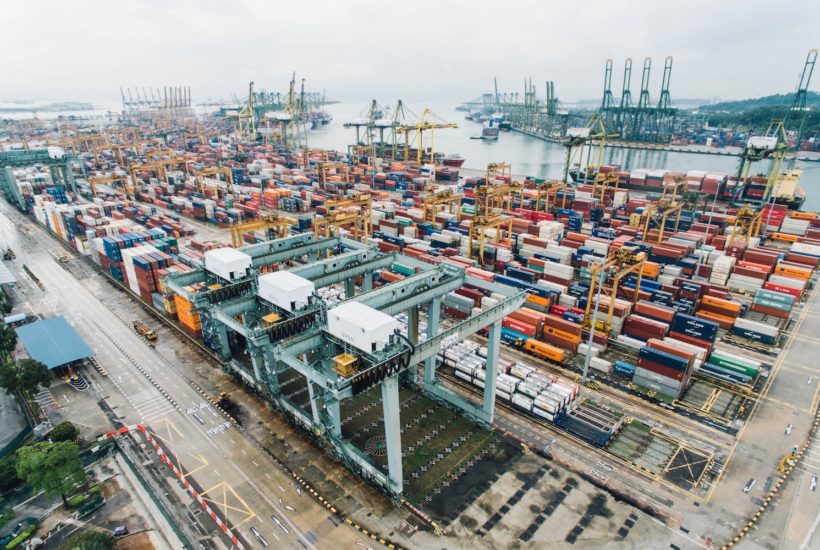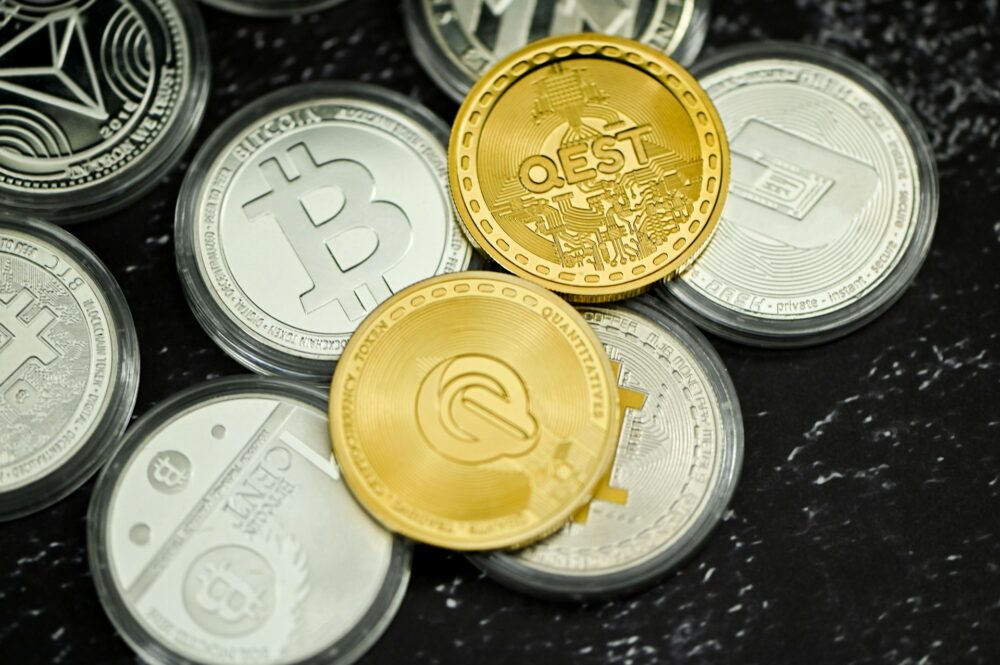Africa
Tunisian foreign trade registered a deficit of $6.9 billion in 2019
Tunisian agricultural and agro-food industries sectors recorded a decline in exports of 16.6% in 2019, after a rise of 42.1% in 2018. The manufacturing industries sector ended 2019 on a negative note, posting a decline of 0.8%. The mechanical and electrical engineering industries (MEI), recorded a significant fall in export volume of 2.4% after a decline of only 0.5% in 2018.

Tunisia’s foreign trade recorded a deficit of $6.9 billion (DT 19.4 billion) in 2019, compared to only $6.5 billion (DT 19 billion) in 2018, according to data from the Central Bank of Tunisia (BCT).
The Institute of Emission noted that the deficit of the energy balance increased in 2019 to about $2.8 billion (DT 7.8 billion), which represents 40% of the trade deficit. “Excluding energy, the trade balance deficit has narrowed slightly to $4.2 billion (DT 11.7 billion) compared to $4.6 billion (DT 12.9 billion) in 2018,” BCT said.
As for export revenues, they amounted to $15.5 billion (DT 43.9 billion) compared to $14.6 billion (DT 41 billion) in 2018, due to the rise in export prices (12.6% after 15% in 2018). In real terms, the BCT pointed out that “exports in 2019 showed a marked drop of 5% after a 3.5% increase in the previous year.”
Financial and business news, stock market quotes, company news and more with the Born2Invest mobile app.
The general decline in exports
The sectoral breakdown of exports in volume terms shows an almost general decline, although to different degrees. The largest exporting sector, the mechanical and electrical engineering industries (MEI) (44% of total exports in 2019), recorded a significant fall in export volume of 2.4% compared to only 0.5% in 2018. “This underperformance bears the mark, in particular, of the fallout from the crisis in the automotive sector in the Eurozone since mid-2018,” explained the BCT. Also, the textile, clothing, and leather sector (20.5% of total exports) has not been spared from the repercussions of the decline in the production of textile industries in the Eurozone.
It posted a sharp fall in the volume of its exports in 2019 of around 6.2% compared to an increase of 2.5% in 2018. After several years of positive growth, the other manufacturing industries sector ended 2019 on a negative note, posting a decline of 0.8%. The sector of agriculture and agro-food industries also recorded a decline in exports of 16.6% compared to a growth of 42.1% in 2018, driven by the decline in olive oil sales on the international market (172,000 tons compared to 229,400 tons exported in 2018). The energy sector’s decline in exports continued in 2019, albeit at a slower pace (7.3% compared to 16.5% in 2018), under the effect of the drop in oil production.
Import expenditure passed the $22.5 billion mark
“Finally, noted the BCT, the drop in exports of the mining sector, phosphates and derivatives, was reduced to 1% in 2019, compared to 12.9% the previous year.”
As for import expenditure, it passed the $22.5 billion (DT 63 billion) mark in 2019 (5.4%) compared to 2018 achievements, supported by the rise in import prices (15.8% compared to 18.8% in 2018). Excluding the price effect, imports in volume contracted by 9% against an increase of 1% in 2018. “With the exception of the energy sector, the BCT pointed out, all sectors of economic activity posted a fall in the volume of their imports in 2019″. Indeed, those of the EMI sector fell by 12.1% against a virtual stagnation of 0.1% in 2018. Also, the THC sector reduced its imports by 8.4% compared to 1.2% in 2018. Along the same lines, imports from the agriculture and agri-food sector and the mining, phosphates and derivatives sector fell by 6.7% and 24.3% respectively (compared to a growth of 0.3% and a decline of only 5.1% in 2018).
The energy sector imports increased by 2.7%
In contrast, imports from the energy sector continued to rise, increasing by 2.7% compared to 1.3% in 2018. According to the BCT, this trend is marked by the sharp rise in the natural gas bill ($1.3 million compared to $818 million in 2018).
On the balance of services side, tourism receipts strengthened in 2019, thanks to the continued strengthening of tourism flows from, in particular, traditional markets, especially European markets (2.8 million tourists compared to 2.4 million in 2018). In 2019 they totaled $2.1 million (€1.8 million), the highest level since 2010.
Labor income (in cash) also improved during the period under review to $1.7 million (€1.5 million), up 14.2% on last year’s achievements.
However, improvements in the services and factor income balances substantially mitigated the impact of the widening trade deficit on the current account balance. Thus, the BCT argues that the current balance stood at -$3.6 billion (DT -10 billion) (or -8.8% of GDP) after reaching an all-time record of -$4.2 billion (DT -11.7 billion) (or -11.1% of GDP) in 2018. Excluding energy, the current balance performed better compared to previous years with only -2% of GDP against an average of -5.3% for the period 2011-2018.
As for foreign exchange reserves, they were significantly consolidated, standing at $6.9 million or 111 days of imports, after three years of continuous declines. “Since the beginning of the year 2020 and until February 5th, reveals the BCT, foreign exchange reserves have remained close to the levels of the end of 2019.
The appreciation of the Dinar’s exchange rate compared to the main currencies, which began in April 2019, continued at the beginning of 2020. During the month of January 2020, the average monthly exchange rate of the Dinar appreciated by 10.2% and 7.2% year-on-year compared to the Euro and the US dollar, respectively.
__
(Featured image by chuttersnap via Unsplash)
DISCLAIMER: This article was written by a third party contributor and does not reflect the opinion of Born2Invest, its management, staff or its associates. Please review our disclaimer for more information.
This article may include forward-looking statements. These forward-looking statements generally are identified by the words “believe,” “project,” “estimate,” “become,” “plan,” “will,” and similar expressions. These forward-looking statements involve known and unknown risks as well as uncertainties, including those discussed in the following cautionary statements and elsewhere in this article and on this site. Although the Company may believe that its expectations are based on reasonable assumptions, the actual results that the Company may achieve may differ materially from any forward-looking statements, which reflect the opinions of the management of the Company only as of the date hereof. Additionally, please make sure to read these important disclosures.
First published in Financial Afrik, a third-party contributor translated and adapted the article from the original. In case of discrepancy, the original will prevail.
Although we made reasonable efforts to provide accurate translations, some parts may be incorrect. Born2Invest assumes no responsibility for errors, omissions or ambiguities in the translations provided on this website. Any person or entity relying on translated content does so at their own risk. Born2Invest is not responsible for losses caused by such reliance on the accuracy or reliability of translated information. If you wish to report an error or inaccuracy in the translation, we encourage you to contact us.

-

 Crypto2 weeks ago
Crypto2 weeks agoA Critical Look at the Progress of IOTA in the First Quarter of 2024
-

 Business3 days ago
Business3 days agoGold & Silver Continue Looking Strong
-

 Crowdfunding1 week ago
Crowdfunding1 week agoCrowdfunding Campaign to Preserve the Tradition of the Navatas of the Gállego River
-

 Crypto1 day ago
Crypto1 day agoHong Kong Approves Bitcoin and Ethereum ETFs: A New Chapter for Cryptocurrencies

























